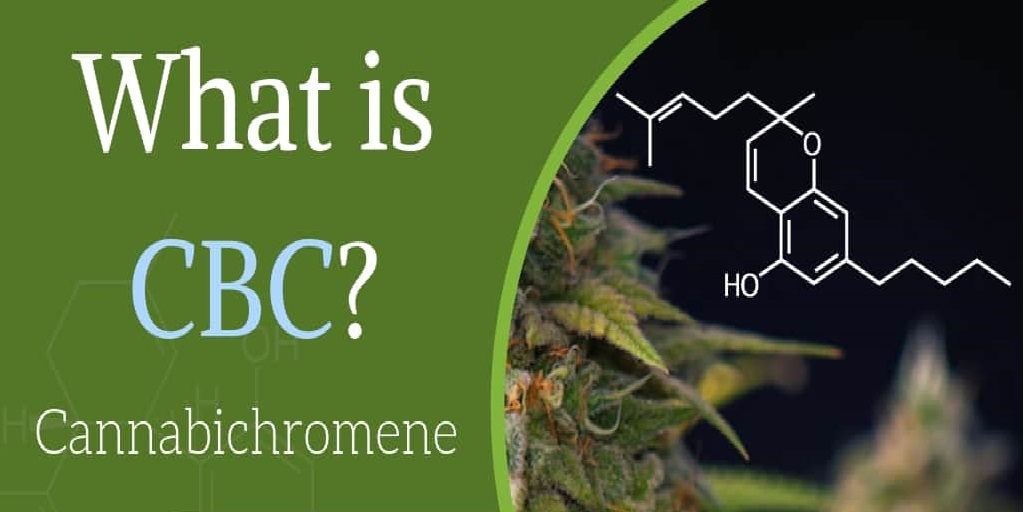Relieve Pain
Studies have shown cannabis (mostly THC and far less CBD) is effective for reducing pain, including musculoskeletal pain from exercise, as well as stiff joints. There is little research on CBD alone or a 1:1 ratio of THC to CBD. This is an area where anecdotal evidence and biological plausibility are the best we have until research catches up. Despite the lack of hard evidence, CBD does appear to relieve pain effectively for many athletes.
Alternative to Non Steroidal Anti Inflammatory drugs
Athletes have been consuming over-the-counter non-steroidal anti-inflammatory drugs like ibuprofen and naproxen sodium for decades, but they may not be as safe as we once thought. Ultradistance athletes, in particular, are typically advised to avoid NSAIDs during long training sessions and events, due to increased risk of renal damage. But even if your workouts and events are short, long-term or frequent use of NSAIDs may increase your risk for heart attack and stroke.
Some athletes have found the pain relieving effect of CBD can reduce or eliminate their use of NSAIDS for exercise-related pain, with minimal side effects. According to The Essentials of Pain Medicine, Fourth Ed., “There are no documented deaths from cannabis or cannabinoid-based products. In a systemic review of studies of oral and oral-mucosal cannabis for various medical conditions, the majority of adverse events reports were considered non-serious (96.6%).”
Alternative to Opioids
According to the CDC, in 2016 opioids were involved in more than 42,000 deaths in the US. Opioid pain medications (i.e. morphine, codeine, oxycontin) are highly effective for pain management, but carry a significant risk of addiction and death by overdose. Cannabinoids are not as effective as opioids for relieving acute, high-intensity pain , but may be effective for long-term pain management – either alone or in conjunction with other medications – with far less risk of dependence or accidental death.
Reduce inflammation
A little bit of inflammation can be good for athletes and help stimulate positive training adaptations. Too much inflammation hinders recovery and hurts performance. There are CB2 receptors in both the brain and periphery, but they are more concentrated in immune tissues. Cannabinoids binding to CB2 receptors may have an anti-inflammatory effect by reducing cytokine (cell messengers) production. In other words, CBD bound to CB2 receptors help dial down the response when your immune system sounds the alarm after hard workouts.

Settle your gut
Inflammation in the small and large intestines causes a lot of discomfort, and GI distress is one of the leading reasons endurance athletes drop out of races. CBD won’t solve stomach problems from dehydration and overheating (two major causes for athletes), but if you have underlying inflammation issues that contribute to gut problems during or after exercise, CBD may be effective for reducing your symptoms. There are CB1 and CB2 receptors in the colon. Colitis symptoms were inhibited (in mice) when CB1 and CB2 receptors were activated.
Improve Sleep Quality
Adenosine triphosphate (ATP) breaks down as your brain burns carbohydrate for energy, and adenosine gradually accumulates in the brain. More adenosine binding to neurons inhibits the release of neurotransmitters, slowing down brain activity, helping you feel calmer, and inducing sleep. Your body metabolizes adenosine as you sleep, and some time later, low concentrations of adenosine help you wake up and the process starts again.
Getting more and better sleep is one of the most effective ways an athlete can achieve greater training gains. Anecdotally, athletes who consume CBD report greater ease going to sleep and a more restful night’s sleep. One potential reason for this could be CBD inhibiting the reuptake of adenosine.
By binding to same receptors adenosine would bind to, CBD may inhibit adenosine reuptake, which helps it accumulate more quickly and makes you feel sleepy sooner. CBD may also have a potent anti-anxiety effect for some people, which can help them get to sleep and have more restful sleep.
How to use CBD
How you consume CBD may affect how quickly you experience its effects. Capsules, oil, and edibles have to be digested, so they may take a bit longer. Topical creams are said to be quicker than edibles, and sublingual drops/tinctures are said to be the most rapid (besides inhalation via vaping).
New CBD-containing products hit the market every week. You can get ingest CBD through capsules, pills, or as an oil. You can inhale it as a vapor. It has been infused into sports drinks, recovery drinks, and all manner of edibles. There are also topical creams and lotions that contain CBD oil, as well as tinctures/drops that can be placed under your tongue.

Lately we’ve been hearing more and more about cannabinoids, especially THC and CBD. But you’ve probably never heard of cannabichromene, also known as CBC. Discovered over 50 years ago, CBC is considered one of the six outstanding cannabinoids in medical research. It doesn’t get the same attention as other cannabinoids, but the benefits of the cannabinoid CBC are extremely promising.
CBC has the same origins as THC and CBD, all of which are derived from cannabigerolic acid (CBGA). Cannabis plants produce CBGA, the precursor to three main cannabinoids: tetrahydrocannabinolic acid (THCA), cannabidiolic acid (CBDA), and cannabichromene carboxylic acid (CBCA).
For CBC, it converts from CBGA to cannabichromene carboxylic acid (CBCA), and then finally to CBC after exposure to heat or ultraviolet light.

What is CBC?
Cannabichromene belongs to the family of organic compounds known as cannabinoids. Contained in hemp and different varieties of marijuana, CBC is synthesized after CBCA is exposed to heat and light. However, it is different from most cannabinoids because it has a low affinity for our CB receptors. Instead, CBC binds to TRPV receptors involved in the perceptions of temperature changes and other stimuli at the cellular level. Although CBC can bring benefits individually, most studies have examined the effects of CBC along with other cannabinoids such as CBD and THC. Cannabichromene shows excellent synergy with other cannabinoids, but despite being an important compound within the biological structure of Cannabis sativa, it is only produced in small amounts.
CBC does not cause intoxication, it does not produce euphoria, like THC. The reason it is not intoxicating is that it binds poorly to CB1 cannabinoid receptors in the brain. But CBC does bind to other receptors in the body, such as vanilloid receptor 1 (TRPV1) and transient potential ankyrin receptor 1 (TRPA1), both of which are linked to pain perception. When CBC activates these receptors, elevated levels of the body’s natural endocannabinoids, such as anandamide, are released.
CBC has separate benefits, but researchers also believe it works in synergy with other cannabinoids, a term known as the entourage effect. This effect of THC working together with CBD is well known, but it is not known whether other cannabinoids also have an entourage effect.
Cannabichromene has been shown to block the pain and inflammation associated with osteoarthritis. Cannabinoids such as CBC act on inflammation differently than nonsteroidal anti-inflammatory drugs (NSAIDs) and do not have the side effects of these drugs. In another example of an entourage effect, CBC in combination with THC had a significant anti-inflammatory response in an animal study: together, the two cannabinoids produced a much greater effect on inflammation than separately.

CBC Research
The benefits that CBC would have have far-reaching implications. Below are some medical conditions that can be alleviated by cannabichromene.
Cancer
Cannabichromene may be a powerful cancer fighter, and the reason might be its interaction with the body’s natural endocannabinoid, anandamide. CBC also appears to inhibit the uptake of anandamide, allowing it to remain longer in the bloodstream.
A recent study in which tumor growth was initiated in mice (two-stage mouse skin carcinogenesis model) showed cannabinoids might be effective in inhibiting both inflammation and tumor growth. Since anandamide has been shown to fight breast cancer in vitro and in vivo, this shows promise that CBC and other cannabinoids might one day be a chemopreventive agent.
CBC as a potential cancer fighter was first published in a 2006 study that looked at cannabinoids other than THC and their possible effects on cancer. While THC is known for its anti-tumor properties for several different forms of cancer, its powerful psychotropic qualities can make it difficult for chemotherapy use. So far, research has found CBC to be the second-most-potent cannabinoid at inhibiting the growth of new cancer cells (CBG was the most potent).
Pain and Inflammation
Cannabichromene has been shown to block pain and inflammation associated with collagen-induced osteoarthritis. Cannabinoids like CBC act on inflammation differently than non-steroidal anti-inflammatory drugs (NSAIDs) do, and don’t have the side effects of these medications. In another example of the entourage effect, CBC in combination with THC had significant anti-inflammatory response in a recent animal study; together, the two cannabinoids produced a much greater effect on inflammation than by themselves.
Brain Cells
In a 2013 mouse study, CBC had a positive effect on neural stem progenitor cells (NSPCs), a cell essential to healthy brain function. NSPCs became more viable when in the presence of CBC, and that shows promise because NSPCs differentiate into astroglial cells, the most important cells for maintaining brain homeostasis. The astroglial cells perform a whole host of functions, including neurotransmitter direction and defending against oxidative stress. Astroglia counteract many of these issues—oxidative stress, inflammation, toxicity—that create neurological diseases and brain pathologies like Alzheimer’s disease.
Acne
A research team that had previously shown CBD’s effect on acne studied other cannabinoids, including CBC, for the same effects. Indeed, CBC was shown to be a powerful inhibitor of acne. As a skin disease, acne is characterized by excess sebum production and sebaceous gland inflammation. It turns out that CBC exhibited powerful anti-inflammatory properties and also suppressed excessive lipid production in the sebaceous glands. CBC also reduced levels of arachidonic acid (AA), which is needed to create the lipogenesis. More research is needed, but CBC might just one day become a very powerful antiacne treatment.




